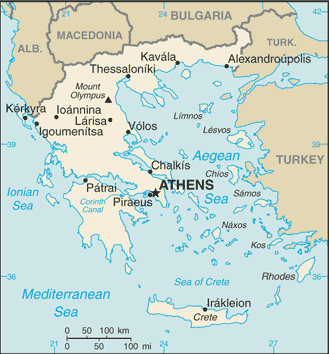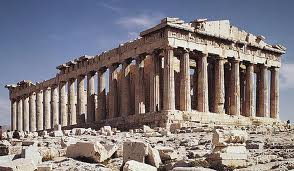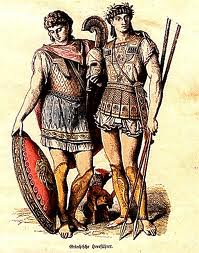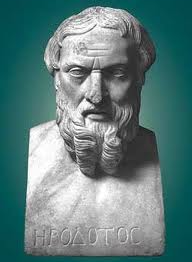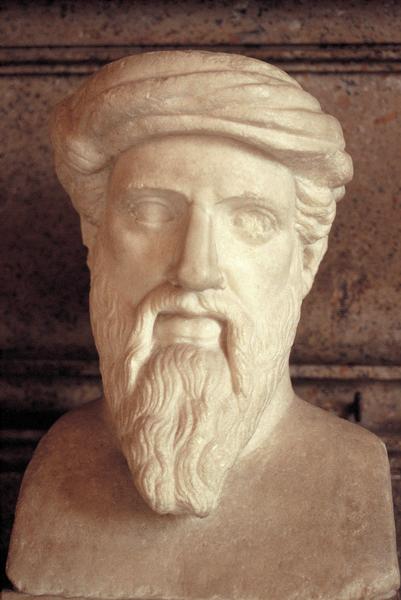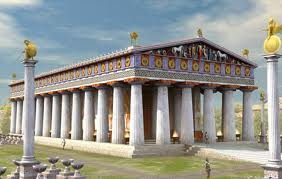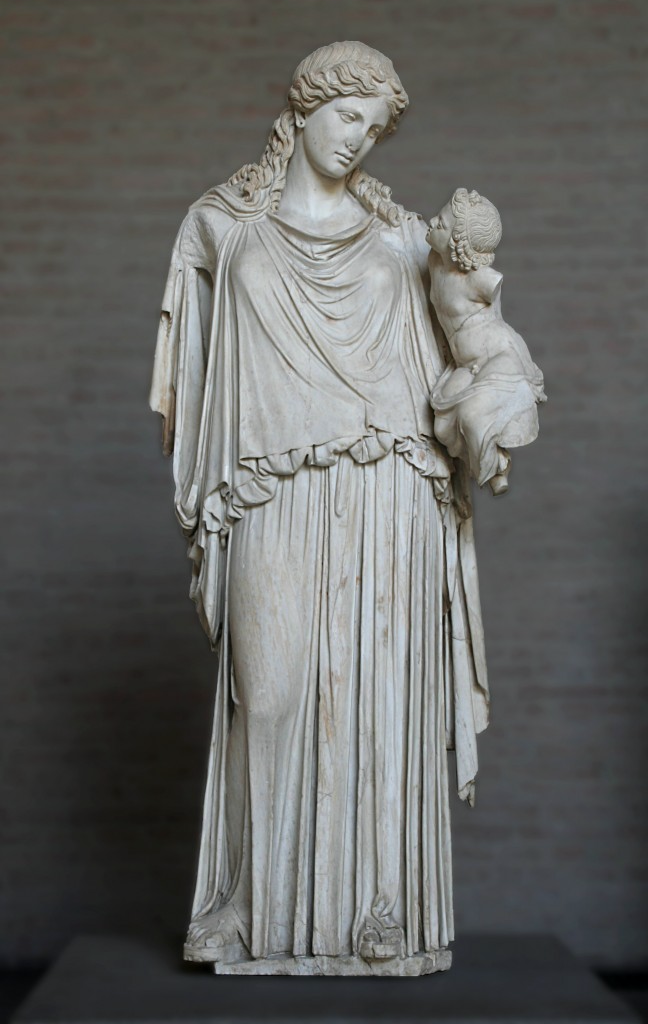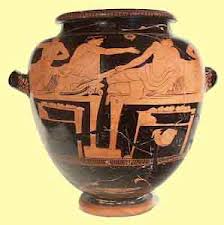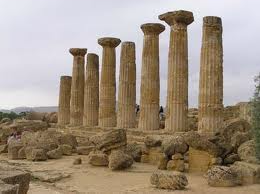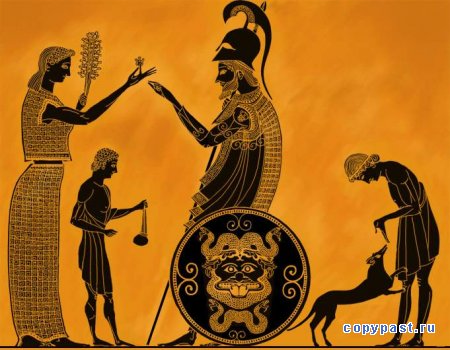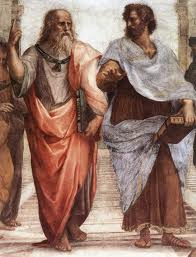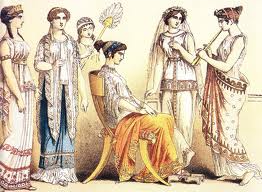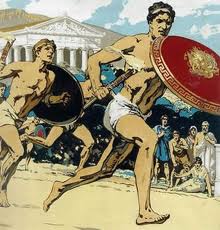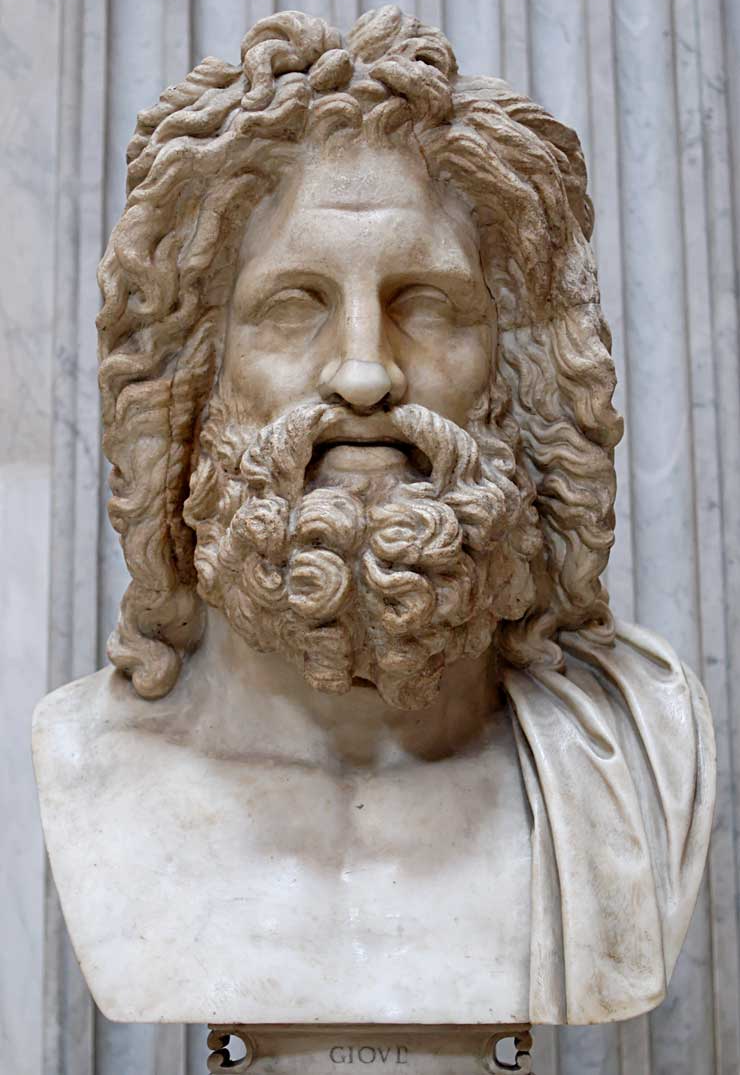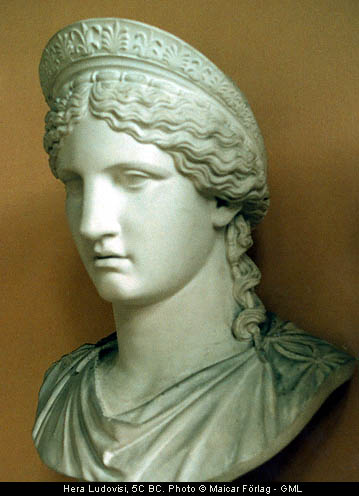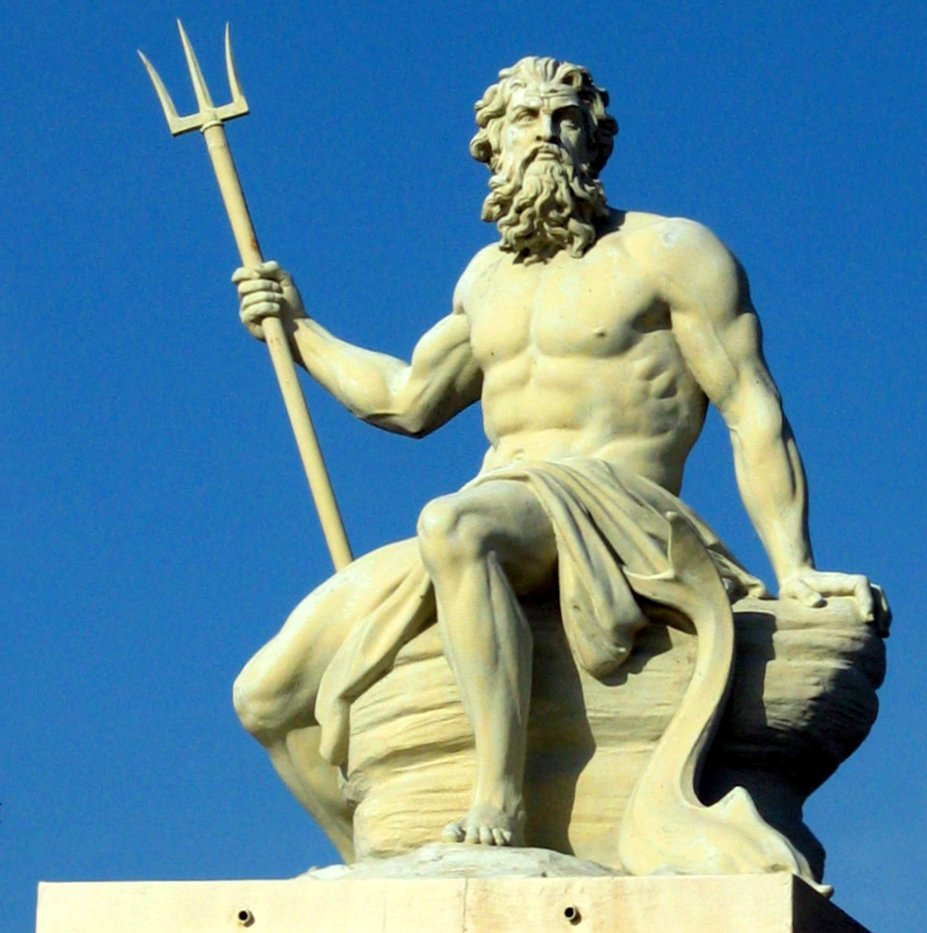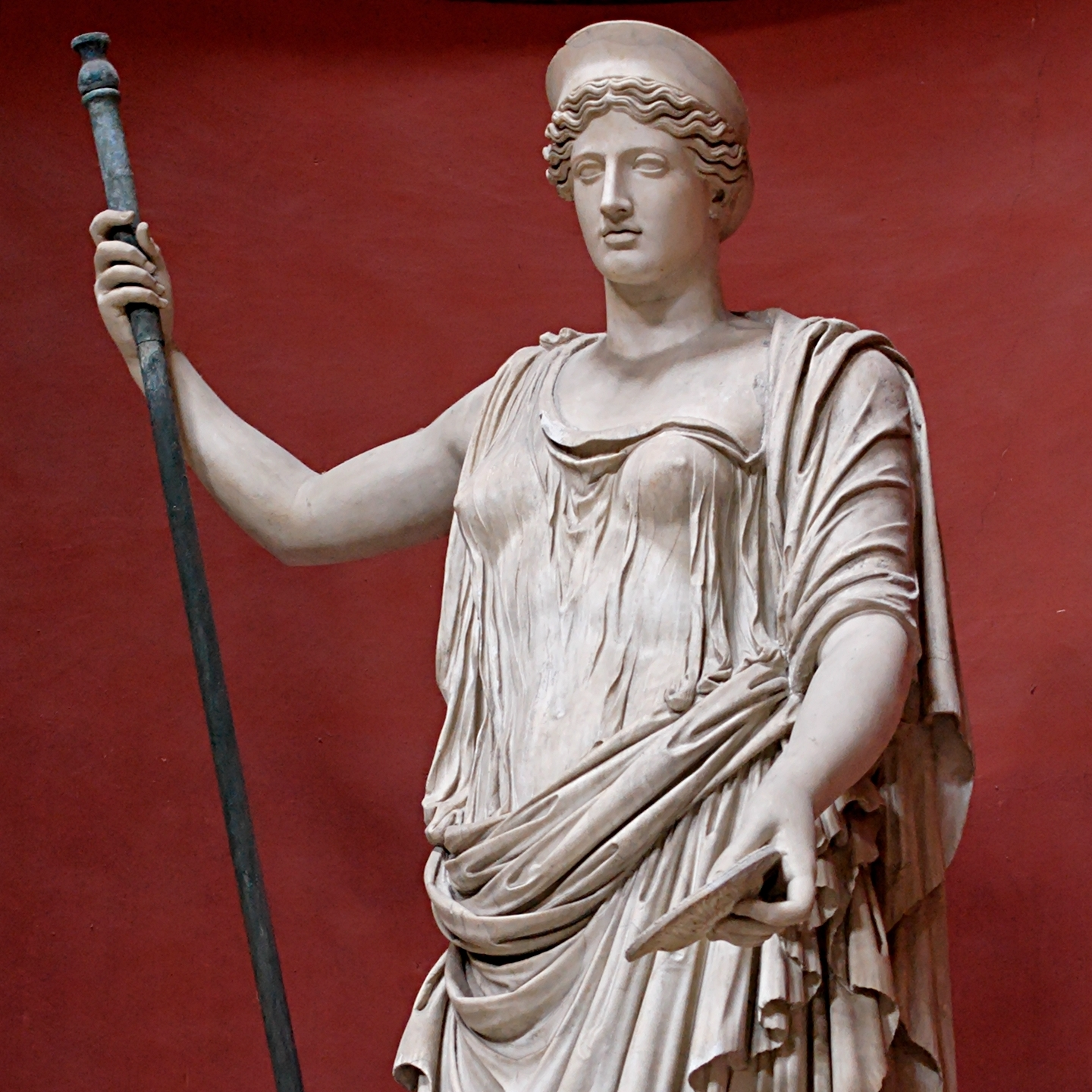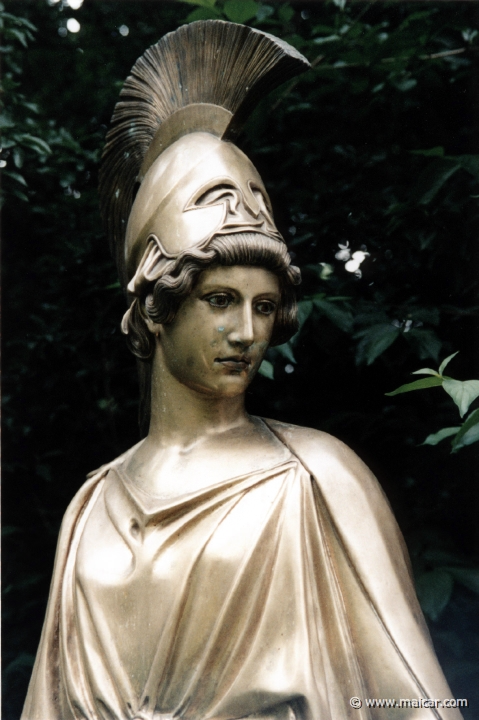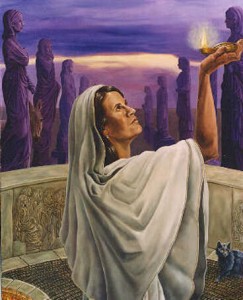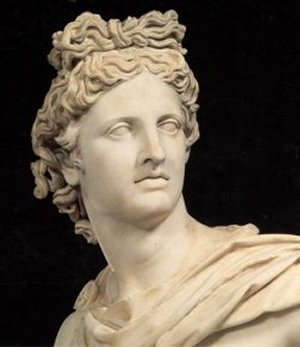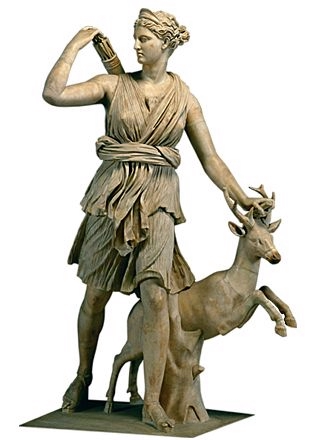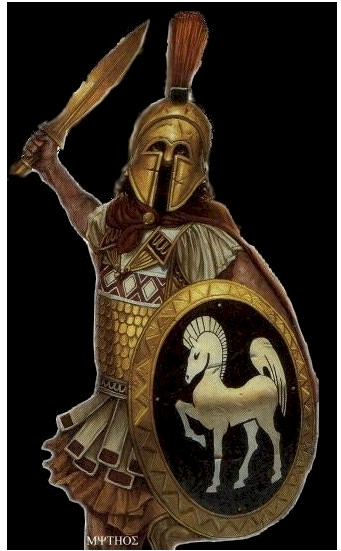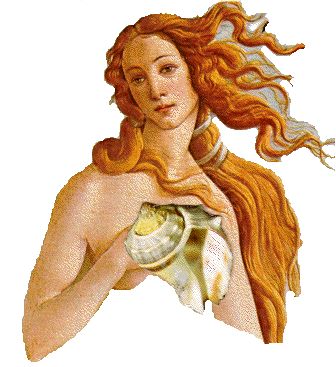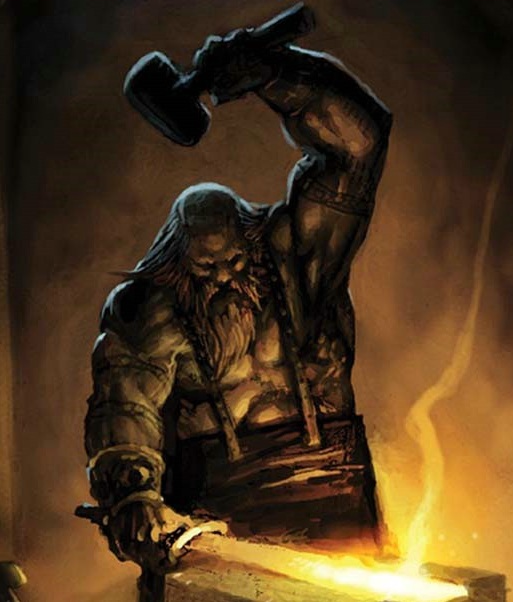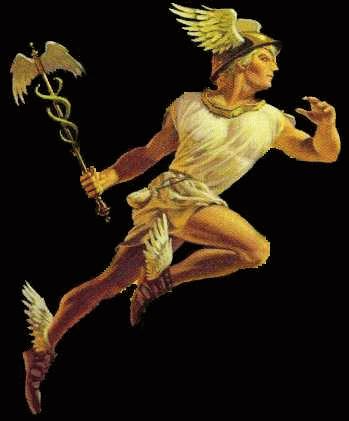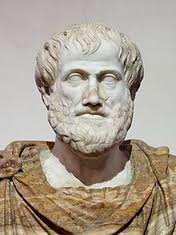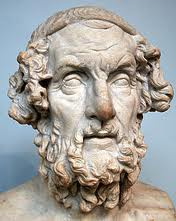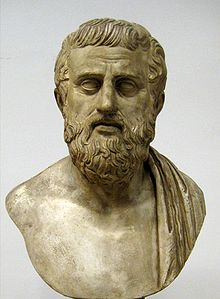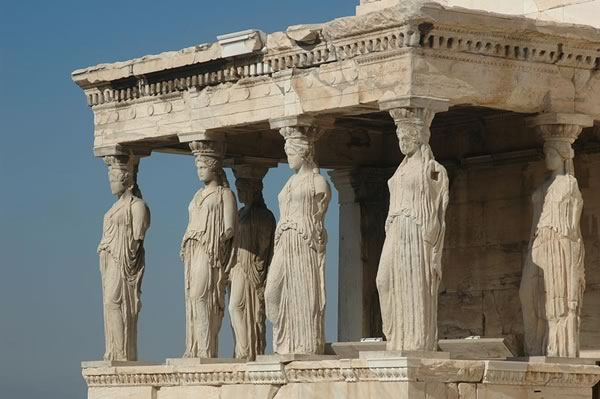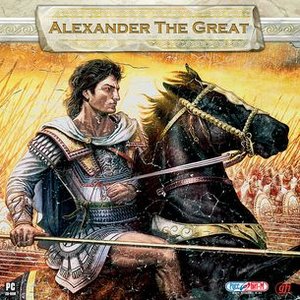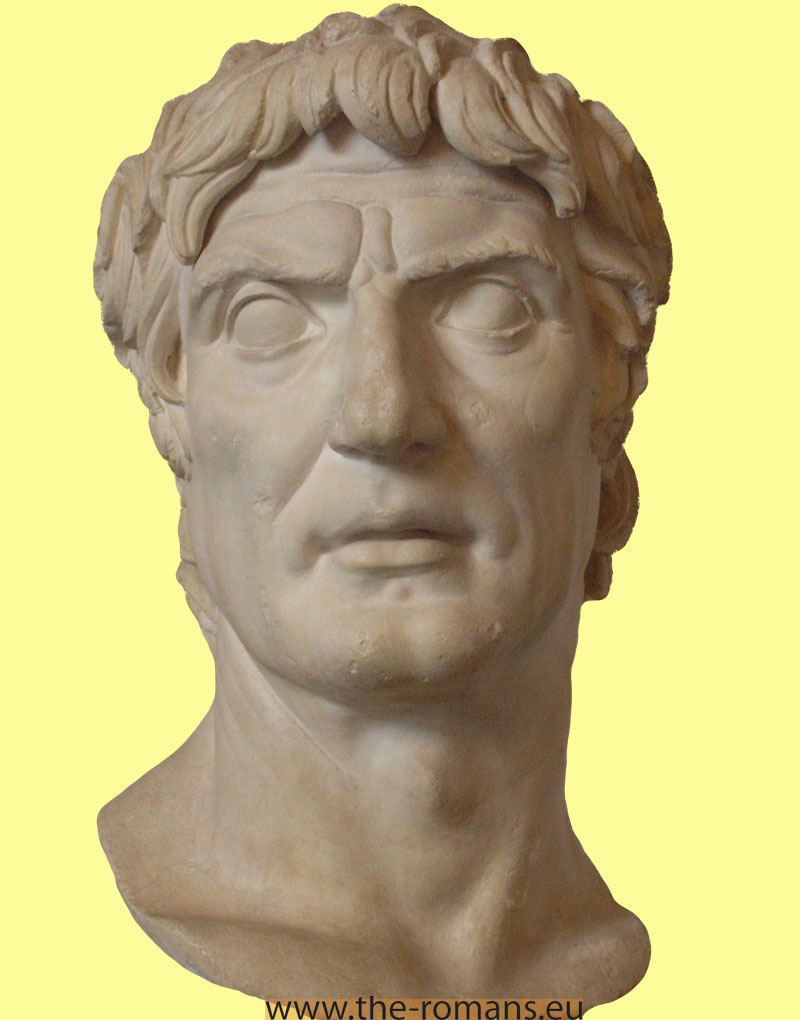
- •Unit 3. Ancient Greece
- •Unit 3. Ancient Greece The Twelve Olympians
- •The Twelve Labours of Heracles
- •3. The Adjective and the Adverb Comparison of adjectives
- •Form and Comparison of Adverbs
- •Irregular adverb
- •Adjective or Adverb
- •Grammar Exercises. The Adjective and the adverb
- •Test. The Adjective and the Adverb
Unit 3. Ancient Greece
Pre-reading
Exercise 1. Answer the following questions:
|
|
1. How long did the period of Greek history last? 2. When was the period of Classical Greece? 3. What were architectural systems in ancient Greece? 4. What wars and revolts were there in ancient Greece? 5. What city is the symbol of freedom, art and democracy? Why? 6. What was the capital of the prefecture of Laconia? 7. What forms of government were there in Greece? 8. What are the major gods and goddesses? 9. Do you know any first Greek gods, Olympic gods, semi-gods, spirits, monsters and creatures? 10. Who are the famous Greek heroes? 11. When and where did the Olympic Games begin? 12. What famous Greek people do you know? |
Reading
Exercise 2. Read the text “Ancient Greece. Part I” and match the headings (A-D) to the correct paragraphs (1-4). Explain the words in bold and point out all geographical names on the map.
|
A. Main historical periods. B. Geography, Regions, Colonies. |
C. Philosophy. D. Social Structure and Government. |
1. .......... . Greece is a country in Southeast Europe. It has land borders with Albania, Macedonia and Bulgaria to the north and Turkey to the east. The Aegean Sea lies to the east of Greece, the Ionian Sea to the west and the Mediterranean Sea to the south. Greece has a large number of islands - about 1,400. Eighty percent of Greece consists of mountains. Olympus Mount is the highest, which is 2,917 m.
The territory of Greece is mountainous, and as a result, ancient Greece consisted of many small regions each with its own dialect, cultural peculiarities and identity. Regionalism and regional conflicts was a prominent feature of ancient Greece.
From about 750 BC the Greeks began 250 years of expansion, settling colonies in all directions. To the east, the Aegean coast of Minor Asia was colonized first, followed by Cyprus, the Sea of Marmara and south coast of the Black Sea.
Eventually Greek colonization reached the present day Ukraine and Russia. To the west the coasts of Illyria, Sicily and Southern Italy were settled, followed by Southern France, Corsica, and even Spain. Greek colonies were also founded in Egypt and Libya.
Modern Syracuse, Naples, Marseille and Istanbul had their beginnings as the Greek colonies. These colonies played an important role in the spread of Greek influence throughout Europe, and also aided in the establishment of long-distance trading networks between the Greek city-states, boosting the economy of ancient Greece.
2. .......... . The history of Greece during Classical Antiquity may be subdivided into the following periods:
1) The Archaic period (750-500 BC) – it was a period of ancient Greek history that followed the Greek Dark Ages. This period saw the rise of the polis and the founding of colonies, classical philosophy, theatre in the form of tragedies and written poetry. The Archaic period is often taken to end with the overthrow of the last tyrant of Athens in 510 BC.
|
|
2) The Classical period (500-323 BC) is characterized by a style which was considered by later observers to be exemplary ('classical'), for instance the Parthenon. Politically, the Classical Period was dominated by Athens during the 5th century, displaced by Spartan hegemony during the early 4th century BC, before power shifted to Thebes and finally to the League of Corinth, led by Macedonia. |
3) The Hellenistic period (323-46 BC) was a period when Greek culture and power expanded into the Near and Middle East. This period begins with the death of Alexander the Great and ends with the Roman conquest.
4) Roman Greece (146 BC-330 AD) was a period between Roman victory over the Corinthians at the Battle of Corinth in 146 BC and the establishment of Byzantium by Constantine as the capital of the Roman Empire in 330 AD.
5) the final phase of Antiquity (4-6 centuries AD-529 AD) is the period of Christianization during the later 4th to early 6th centuries, taken to be complete with the closure of the Neoplatonic Academy by Justinian I in 529 AD.
|
3. .......... . Greece in the Archaic Period was made up from independent states, called Polis or city state. Greek Society was mainly broken up between Free people and Slaves. Slaves were used as servants without any legal rights. Although many slaves lived closely with their owners, few were skilled craftsmen. As Athenian society developed, free men were divided between Citizens and Metics. After compulsory service in the army they were expected to be government officials. The metic was a foreign birth man that had migrated to Athens, to either trade or practice a craft. However, they could never achieve full rights of a Citizen. The social classes applied to men only, as women took their social and legal status from their husband. Women in ancient Greece were not permitted to take part in public life. |
|
There were three main forms of government in ancient Greece: 1. Monarchy (750 BC) is a form of a government ruled or headed by a monarch. One city-state whose government was a monarchy was the city-state of Corinth. 2. Oligarchy (800 BC) is a form of a government by a few, especially by a small faction of persons or families. One city-state whose government was an oligarchy was the city-state of Sparta. 3. Democracy (500 BC) is a form of a government by the people or their elected representatives. One city-state whose government experimented for about a hundred years with democracy was the ancient city-state of Athens.
4. .......... . Ancient Greek philosophy arose in the 6th century BC and continued through the Hellenistic period. It dealt with a wide variety of subjects, including political philosophy, ethics, metaphysics, logic, biology, rhetoric, etc.
Ancient Greek philosophy is dominated by three very famous men: Socrates, Plato and Aristotle. Plato was Socrates’ student in around 400 BC. Socrates was killed in 399 BC and Plato began his work by writing down what Socrates had taught and then continued by writing down his own ideas. Aristotle, who was younger, came to study at Plato's school and ended up starting his own school as well.
In the years after Plato and Aristotle died, in the 200s BC, three famous kinds of philosophy appeared in the schools that Plato and Aristotle had started: the Stoics, the Skeptics and the Epicureans.
Exercise 3. Read the text “Ancient Greece. Part II” and explain the words in bold. Write down into your vocabularies the transcription of the proper names given in italics.
Literature. The Greeks wrote a great deal and a surprising amount of different kinds of books. What they wrote is still available to us today, even 2500 years later. Their writing is traditionally divided into 6 types:
1) epic: Around 700 BC : Homer wrote two connected epics, the ‘Iliad’ and the ‘Odyssey’. Epics are long poems which tell the story of a hero.
2) poems: Two early Greek examples are Hesiod's ‘Theogony’ and ‘Works and Days’, both from around 700 BC. There are also a number of short poems by Archilochus and Sappho from the 600s BC, among others. Sappho's poems are the only surviving literature by a Greek woman.
3) plays: Plays are divided into tragedies and comedies. Tragedies are generally sad, while comedies are funny. The oldest tragedies that we still have were written by Aeschylus in around 500 BC. We also have tragedies written by Sophocles (around 450 BC) and Euripides (around 425 BC). The oldest comedies that we still have are by Aristophanes and were also written in around 425 BC.
|
Herodotus |
4) history: Two major histories were written by Herodotus and Thucydides. In about 450 BC Herodotus wrote a history of the Persian Wars. In about 400 BC Thucydides wrote a history of the Peloponnesian War. After the Peloponnesian War, Xenophon wrote about his adventures as a mercenary soldier for the Persians. During the Roman takeover of Greece, Polybius wrote a ‘History of Rome’ in Greek. 5) philosophical dialogues and treatises : The first written philosophy was completed by Plato in around 380 BC in the form of a play. Later Plato and his student Aristotle wrote regular philosophical books, in prose without dialogues. |
6) legal and political speeches: The first speeches that have survived are from the 3rd century BC. The three most famous speechwriters were Lysias, Isocrates and Demosthenes.
Theatre. Most Greek cities had a theatre. It was in the open air and was usually a bowl-shaped arena on a hillside. Some theatres were very big, with room for more than 15,000 people in the audience.
All the actors were men or boys. Dancers and singers, called the chorus, performed on a flat area called the orchestra. Over time, solo actors also took part and a raised stage became part of the theatre. The actors changed costumes in a hut called the "skene". Painting the walls of the hut made the first scenery. The plays were comedies or tragedies.
|
Science. Greek people were very interested in science as a way of organizing the world and making order out of chaos. From about 600 BC, a lot of Greek men spent time observing the planets, the sun and trying to figure out how astronomy worked. By about 400 BC, Pythagoras was interested in finding the patterns and rules in mathematics and music. Socrates developed logical methods for deciding whether something was true or not. In 300 BC, Aristotle and other philosophers at the Academy in Athens worked on observing plants, animals and organized them into types. After Aristotle, using his ideas and also ideas from Egyptians, Persians and Indians, Hippocrates and other Greek doctors wrote important medical texts. |
Pythagoras |
Architecture. Architecture includes houses, religious buildings like temples and tombs, public building like city walls, theaters and stadia.
There is no really sharp change in the style of architecture between the Archaic and the Classical periods. The most famous surviving classical temple is the Parthenon in Athens, which mixes the Doric and the new Ionic styles.
The Parthenon, a temple to Athena the Pure, was built in Athens in 440 BC. It was the best temple ever built. It was made of marble, even the roof-tiles, with 8 columns across the front and with carved sculptures on the metopes.
Also in the Classical period, the Greeks began to build permanent stone theaters, like the Theater of Dionysus on the side of the Acropolis in Athens.
Sculpture. Sculpture includes small figurines and life-size statues, but also relief sculptures which were on the sides of buildings and tombs.
a) Classical Greek Sculpture. The Severe Style didn't last very long and by about 460 BC it was replaced by the Classical style. Greek sculptors began to experiment with honoring the gods by showing the beauty and grace of the human body, especially the bodies of young, athletic men.
|
|
The sculptors also became more interested in the three-side sculpture: people being able to see it from all different sides and not just from the front. One of the most famous sculptors of the Classical period was Phidias. His most famous work does not survive: it was a great gold and ivory statue of Zeus for the temple of Zeus on the Olympia Mount, made in about 440 BC. |
People and gods are shown calm, peaceful, in control of their emotions and their bodies. People, to Phidias and other Greeks of this time, are wonderful creations of the gods, beautiful, strong and intelligent.
|
b) Hellenistic Sculpture. By about 340 BC, sculptors were moving into a new style of art we call the Hellenistic. At the end of the 400s BC, Greece and especially Athens, was devastated by the Peloponnesian War which involved nearly all the Greek city-states. The end of the war left the Greeks too poor for much sculpture, so they began to create sculpture in a new style. There is more interest in women, who are sometimes shown without clothes. There are several famous sculptors from this period. One was Praxiteles, who worked around 340 BC. He carved a statue of Hermes and the infant Dionysus in the Temple. Praxiteles also carved a statue of Aphrodite which was so beautiful that men fell in love with it. Lysippus was another famous Hellenistic sculptor, the favorite sculptor of Alexander the Great. His most famous work is Apoxyomenos, it’s a young man scraping the oil from his skin with a strigil. It was carved in around 320 BC. |
Aphrodite |
Exercise 4. Answer the following questions.
|
|
1. What land borders had Ancient Greece? 2. When did the Greeks begin the expansion? 3. Where were Greek colonies founded? 4. How many historical periods were there during Classical Antiquity? 5. What was the social structure of ancient Greece? 6. What were the main forms of government? 7. What three famous kinds of philosophy appeared in the 200s BC? 8. Could you name six types of Greek writing? | |
|
9. What are the famous representatives of Greek literature? 10. What do you know about ancient Greece theatre? 11. What famous Greek scientists lived in the country? 12. What architectural styles were there in ancient Greece? 13. What sculptural styles were presented in ancient Greece? 14. What famous Greek sculptors do you know? |
| |
Language development
Exercise 5. Fill in the words from the list and then make sentences using the completed phrases.
a) a temple to Athena, b) Alexander, c) compulsory service, d) final phase, e) hegemony during the early, f) influence throughout, g) main forms, h) over the Corinthians, i) part in public, j) peculiarities, k) regional conflicts, l) the last tyrant, m) trading network, n) were used as
|
1. a long-distance ..................... 2. ........................... in the army 3. cultural ............. and identity 4. Greek ....................... Europe 5. regionalism and .................... 6. Roman victory ...................... 7. slaves ...................... servants |
|
8. Spartan ........ 4th century BC 9. the death of ........... the Great 10. the .................. of Antiquity 11. the overthrow of ................. 12. the Parthenon is .... the Pure 13. three ........... of government 14. to take ........................... life |
Exercise 6. Fill in the correct preposition or particle from the box. Then make sentences using the completed phrases.
a) by, b) during, c) from, d) in, e) of, f) on, g) to, h) with
1. a number ..... short poems ..... Archilochus and Sappho, 2. a surprising amount ..... different kinds ..... books, 3. a theatre was usually a bowl-shaped arena ..... a hillside, 4. a young man scraping the oil ...... his skin ..... a strigil, 5. Byzantium was the capital ..... the Roman Empire ..... 330 AD, 6. ..... the Roman takeover ..... Greece, 7. ..... about 750 BC the Greeks began 250 years ..... expansion, 8. philosophy dealt ..... a wide variety ..... subjects, 9. power shifted ..... Thebes and the League ..... Corinth, 10. the Aegean Sea lies ..... the east ..... Greece, 11. the Battle ..... Corinth ..... 146 BC, 12. the closure ..... the Neoplatonic Academy ..... Justinian I ..... 529 AD, 13. the establishment ..... Byzantium ..... Constantine, 14. the theater ..... Dionysus ..... the side ..... the Acropolis ..... Athens
Exercise 7. Match the items to make full sentences.
|
1. At the end of the 400s BC, Greece and especially Athens, ............................................... 2. In 300 BC, Aristotle and other philosophers at the Academy in Athens ....................................... 3. The most famous surviving classical temple is the Parthenon ....................................................... 4. People, to Phidias and other Greeks of this time, ..................................................................... 5. Architecture includes houses, religious buildings like temples and tombs, .......................
|
a) are wonderful creations of the gods, beautiful, strong and intelligent. b) as a way of organizing the world and making order out of chaos. c) but also relief sculptures which were on the sides of buildings and tombs. d) by Aristophanes which were written in around 425 BC. e) in Athens, which mixes the Doric and the new Ionic styles. |
|
6. The first written philosophy was completed by ......................................................................... 7. Sculpture includes small figurines and life-size statues, .......................................................... 8. The oldest comedies that we still have are ...... 9. Greek people were very interested in science .............................................................................. 10. The sculptors also became more interested in the three-side sculpture: ...................................... |
f) people being able to see it from all different sides and not just from the front. g) Plato in around 380 BC in the form of a play. h) public building like city walls, theaters and stadia. i) was devastated by the Peloponnesian War which involved nearly all the Greek city-states. j) worked on observing plants, animals and organized them into types. |
Exercise 8. Translate the words in bold and then match the pairs which are similar in meaning.
1. a chorus, 2. a coast, 3. a creature, 4. a death, 5. a figurine, 6. a peculiarity, 7. a polis, 8. a revolt, 9. a takeover , 10. a treaty, 11. an infant, 12. important, 13. prominent, 14. to boost, 15. to devastate, 16. to dominate, 17. to permit, 18. to scrape, 19. to shift, 20. trade
a) a baby, b) a being, c) a choir, d) a city-state, e) a decease, f) a feature, g) a pact, h) a rebellion, i) a seaboard, j) a seizure, k) a statuette, l) commerce, m) famous, n) significant, o) to allow, p) to hand, q) to prevail, r) to raise, s) to ravage, t) to scratch
Exercise 9. Explain the words in bold and then match them with the best definition.
1. a figurine, 2. a metope, 3. a scenery, 4. a stadium, 5. a treaty, 6. an epic, 7. an orchestra, 8. ethics,9. hegemony, 10. monarchy
|
|
a) a course on which foot races were held in ancient Greece, usually semicircular and having tiers of seats for spectators; b) a form of government in which supreme authority is vested in a single and usually hereditary figure, such as a king, and whose powers can vary from those of an absolute despot to those of a figurehead; c) a formal agreement or contract between two or more states, such as an alliance or trade arrangement; d) a large group of musicians, especially one whose members play a variety of different instruments; e) a long narrative poem recounting in elevated style the deeds of a legendary hero, especially one originating in oral folk tradition; | |
|
f) a small molded or sculptured figure; a statuette; g) any of the spaces between two triglyphs on a Doric frieze; h) the painted backcloths, stage structures, etc., used to represent a location in a theatre or studio; i) the philosophical study of the moral value of human conduct and of the rules and principles that ought to govern it; moral philosophy; j) the predominant influence, as of a state, region, or group, over another or others; |
| |
Speaking
Exercise 10. Complete the text “The Olympic Games”, using words from the box. Use a dictionary to help you if necessary. Make up an oral summary of the text.
a) banned, b) competition, c) festivals, d) flowers, e) founder, f) olive tree, g) qualities, h) records, i) worship, j) Zeus
According to historical 1) ....., the first ancient Olympic Games can be traced back to 776 BC. They were dedicated to the Olympian gods and were staged on the ancient plains of Olympia. They continued for nearly 12 centuries, until Emperor Theodosius decreed in 393 AD that all such "pagan cults" be 2) ..... .
|
|
Olympia. Olympia, the site of the ancient Olympic Games, is in the western part of the Peloponnese which, according to Greek mythology, is the island of "Pelops", the 3) ..... of the Olympic Games. Imposing temples, votive buildings, elaborate shrines and ancient sporting facilities were combined in a site of unique natural and mystical beauty. Olympia functioned as a meeting place for 4) ....., religious and political practices as early as the 10th century BC. The central part of Olympia was dominated by the majestic temple of 5) ....., with the temple of Hera parallel to it. |
The Games and religion. The Olympic Games were closely linked to the religious 6) ..... of the cult of Zeus, but were not an integral part of a rite. Indeed, they had a secular character and aimed to show the physical 7) ..... and evolution of the performances accomplished by young people, as well as encouraging good relations between the cities of Greece.
Victory Ceremonies. The Olympic winner received his first award immediately after the 8) ...... . Following the announcement of the winner's name by the herald, the Hellanodikis (a Greek judge) would place a palm branch in his hands, while the spectators cheered and threw 9) ..... to him. Red ribbons were tied on his head and hands as a mark of victory.
The official award ceremony would take place on the last day of the Games, at the elevated vestibule of the temple of Zeus. In a loud voice, the herald would announce the name of the Olympic winner, his father's name and his homeland. Then, the Hellanodikis placed the sacred 10) ..... wreath on the winner's head.
Exercise 11. Divide the proper names listed below into the following groups:
a) playwrights, b) philosophers, c) historians, d) mythical characters, e) epic poets, f) leaders, g) sculptors, h) mathematicians
|
1. Aeschylus, 2. Alexander the Great, 3. Archimedes, 4. Aristophanes, 5. Aristotle, 6. Electra, 7. Epicurus, 8. Euripides, 9. Heracles, 10. Herodotus, 11. Hesiod |
|
12. Homer, 13. Jason, 14. Oedipus, 15. Orpheus, 16. Pericles, 17. Phidias, 18. Plato, 19. Praxiteles, 20. Socrates, 21. Sophocles, 22. Thucydides, 23. Xenophon, 24. Zeus |
Exercise 12. Match Ancient Greek gods with their Roman counterparts.
1. Aphrodite, 2. Ares, 3. Artemis, 4. Athena, 5. Eros, 6. Hades, 7. Hephaestus, 8. Hera, 9. Heracles, 10. Hermes, 11. Hestia, 12. Poseidon
a) Cupid, b) Diana, c) Hercules, d) Juno, e) Mars, f) Mercury, g) Minerva, h) Neptune, i) Pluto, j) Venus, k) Vesta, l) Vulcan
Exercise 13. Choose the twelve Olympians from the list to label the pictures. Give a short information about each of the principal deities of the Greek pantheon.
1. Aphrodite, 2. Apollo, 3. Ares, 4. Artemis, 5. Athena, 6. Demeter, 7. Hephaestus, 8. Hera, 9. Hermes, 10. Hestia, 11. Poseidon, 12. Zeus
|
a) ………………… |
b) …………………. |
c) …………………. |
d) ……………… |
|
e) …………………. |
f) ……………………. |
g) …………………… |
h)…………………… |
|
i) …………………….. |
j) ………………….. |
k) ………………….. |
l) …………………… |
Exercise 14. Match the list of proper names with the best definition. Translate and explain the words in bold.
a) Alexander the Great, b) Aristotle, c) Democritus, d) Diocletian, e) Euclid, f) Pericles, g) Philip II of Macedon, h) Pythagoras, i) Solon, j) Sulla
|
Aristotle (384-322BC) |
1.A prominent and influential statesman, orator, and general of Athens during the city's Golden Age - specifically, the time between the Persian and Peloponnesian wars (495 – 429 BC). 2. A Greek philosopher and polymath, a student of Plato and teacher of Alexander the Great. His writings cover many subjects, including physics, metaphysics, poetry, theater, music, logic, rhetoric, linguistics, politics, government, ethics, biology, and zoology (384 – 322 BC). 3. An Ionian Greek philosopher, mathematician, and founder of the religious movement called Pythagoreanism (570 – 495 BC). 4. A Greek mathematician often referred to as the "Father of Geometry". |
|
Plato (424-348 BC) |
5. An Athenian statesman, lawmaker, and poet. His reforms failed in the short term, yet he is often credited with having laid the foundations for Athenian democracy (638 BC – 558 BC). 6. A Roman general and statesman; he was one of the canonical great men of Roman history, included in the biographical collections of leading generals and politicians (138 BC – 78 BC). 7. A Greek king of Macedon, a state in northern ancient Greece. Born in Pella in 356 BC, Alexander was tutored by Aristotle until the age of 16 (356 – 323 BC). |
8. An Ancient Greek philosopher; he was a pupil of Leucippus, who formulated an atomic theory for the universe; many consider him to be the "father of modern science" (460 – 370 BC).
9. A king of Macedonia from 359 BC until his assassination in 336 BC. In 338 he conquered Greece, putting an end to the independent Greek polis. He was the father of Alexander the Great and Philip III. His son Alexander succeeded him as ruler of Macedonia. (382–336 BC).
10. A Roman Emperor from 284 to 305. ‘The Great Persecution’ (303-311) was the last and most severe persecution of Christians in the Roman Empire. (244 – 311 AD).
Exercise 15. Read the text about Ancient Greece timeline. Use a dictionary to help you if necessary and explain the words in bold. Then, make up dialogues, using the information below.
|
2900 BC : 2900-2000 BC: The Bronze Age when Early Aegean cultures start to emerge 2500 BC - The great Minoan civilization 1200 BC - The Trojan War and the destruction of Troy (Ilium) 1050 BC : 1050-750 BC: The Dark Ages of Greece and the fall of the Mycenean culture 850 BC: 850-700 BC: Development of the first Greek Alphabet 776 BC - The First Olympic Games were staged 750 BC – 750-700 BC: Homer wrote the “Iliad” and the “Odyssey” 730 BC – 730-710 BC - the First Messenian War and the Spartans conquered southwest Peloponnesia |
Homer (800-701 BC) | |||||
|
Sophocles (496-406 BC) |
650 BC - The Rise of the Greek tyrants 621 BC - Draco's code of law was introduced 600 BC - Greek Coin currency introduced 500 BC - 500-323 BC - The Greek Classical Period 505 BC - Cleisthenes introduced democracy in Athens 490 BC - Greek / Persian Wars led by Xerxes 468 BC - Sophocles wrote his first tragedy 461 BC - 461-446 BC: The Peloponnesian Wars began between Sparta and Athens 449 BC - 449 - 432: Construction of the Parthenon and the Acropolis in Athens | |||||
|
441 BC - Euripides wrote his first tragedy 443 BC: 443 - 429 BC Pericles led Athens 430 BC - Outbreak of Bubonic Plague in Athens 431 BC - Second of the Peloponnesian Wars between Sparta and Athens 420 BC: 420 - 410: Construction of Temple of Athena Nike 399 BC - Socrates was executed for his opposition to the Thirty Tyrants |
| |||||
|
386 BC - Plato founded the Academy 384 BC - Aristotle was born 359 BC - Philip II became the king of the Greeks 356 BC - Alexander the Great, the son of King Philip II, was born 333 BC - Alexander the Great defeated the Persians at Issus and was given Egypt by the Persian Satrap where he built a capital in Alexandria and founded the great library 323 BC - Alexander the Great died at Babylon |
| |||||
|
Sulla (138-78 BC) |
323 BC: 323 -31 BC: The Hellenistic Period 224 BC - Earthquake destroyed the Colossus of Rhodes 200 BC: 200 - 196 BC: First Roman victory over Greece 197 BC - King Philip V of Greece was defeated by Romans at Kynoskephalai 86 BC - The Roman General Sulla captured Athens 33 AD - Crucifixion of Jesus and the origin of Christianity 267 AD - The Goths sacked Athens, Sparta and Corinth 286 AD - Emperor Diocletian divided the Roman Empire into the Eastern Roman Empire (ruled by Constantinople) and the Western Roman Empire (ruled by Rome). |
| ||||
Exercise 16. Use the information from the internet or historical books/encyclopedias and speak about:
1. Famous philosophers, 2. Notable writers, 3. Science and technology, 4. Art and architecture, 5. Religion and mythology, 6. The Greek alphabet, 7. The Olympic Games, 8. Education.
Writing
Exercise 17. Choose one of the following topics based on Greek mythological figures and write a composition using 150-200 words.
1) Immortals: 1. Olympian deities, 2. Primordial deities (Erebos, Gaea, Hemera, Chaos, Chronos, Uranus, Tartarus), 3. Titans a) The Twelve Titans: Hyperion, Iapetus, Coeus, Crius, Cronus, Mnemosyne, Oceanus, Phoebe, Rhea, Tethys, Theia, Themis; b) Other Titans: Asteria, Atlas, Aura, Helios, Leto, Prometheus, 4. Giants (Centimanes, Agrius, Cyclopes, Geryon, Typhon, 5. Personified concepts, 6. Chthonic deities (Angelos, Cerberus, Charon, the Furies, Lamia, etc.), 7. Sea deities (Hydros, Amphitrite, Gorgons, The Harpies, The Sirens, etc.), 8. Sky deities (Anemoi, Selene, Eos, Iris, etc.), 9. Rustic deities (Centaurs, Chloris, Dionysus, Dryades, Oreades, Oceanides), 10. Agricultural deities (Adonis, Carmanor, Demeter), 11. Health deities (Aceso, Asclepius, Panacea).
2) Mortals: 1. Heroes (Achilles, Ajax the Great, Daedalus, Hector, Jason, Odysseus, Perseus, Theseus), 2. Notable women (Andromeda, Ariadne, Cassandra, Europa, Helen, Hermione, Medusa, Pandora, Penelope), 3. Kings (Actaeus, Agamemnon, Argus, Electryon, Priam, Menelaus, Minos), 4. Seers (Amphilochus, Cassandra, Helenus, Melampus), 5. Amazons (Alcibie, Antandre, Asteria, Hippothoe, Otrera, Penthesilea), 6. Inmates of Tartarus (The Daiaides, Ixion, Sisyphus, Tantalus).
Project
Exercise 18. Make a short presentation of one of the following topics:
1. Greek Clothes, 2. Greek Houses, 3. Greek Food, 4. Greek Theatre, 5. Greco-Persian Wars (499-449 BC), 6. The Peloponnesian War (431-404 BC), 7. The Battle of Marathon, 8. The Corinthian War (395-387 BC), 9. Political structure, 10. The Archaic Period, 11. The Classical Period, 12. The Hellenistic period, 13. Ancient Greek warfare, 14. A famous person of Ancient Greece.

